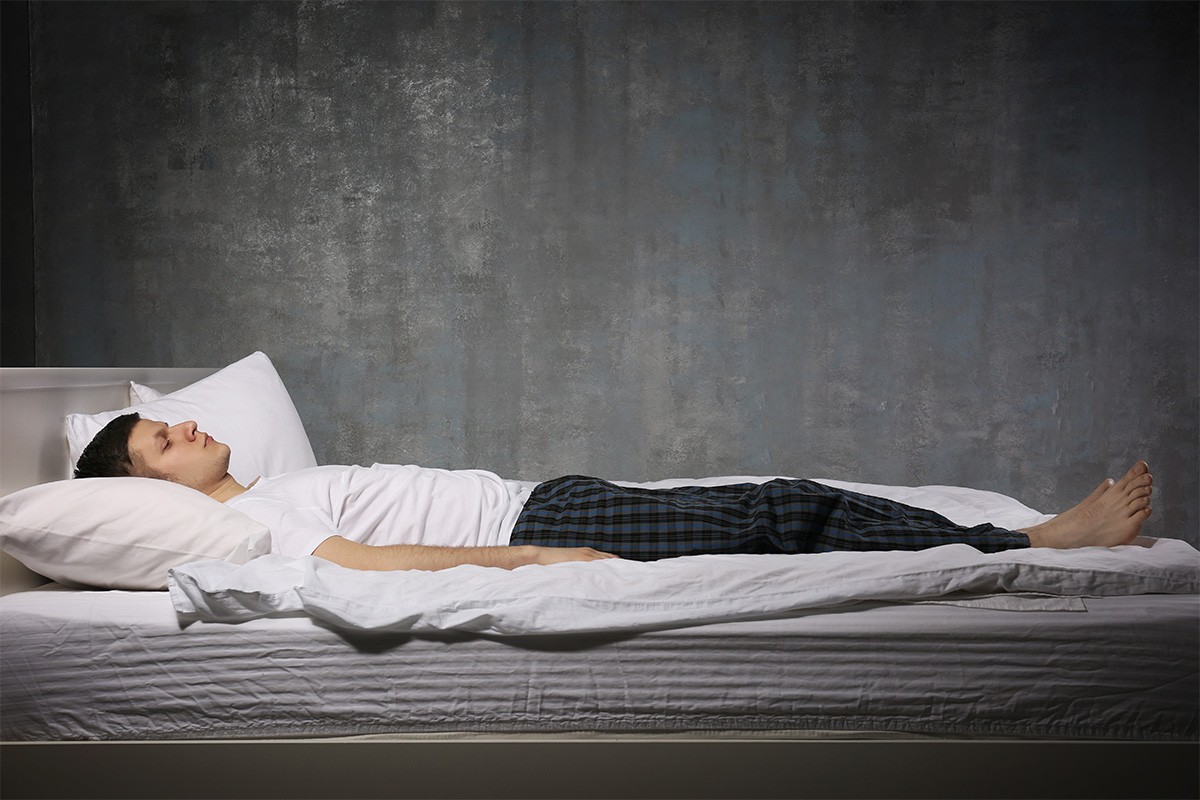
Have you ever woken from sleep feeling trapped in your body, and unable to move or speak? It could be sleep paralysis.
You wake up from what feels like a deep sleep (but not a dream) and, though fully aware of what is happening, you can’t move or speak. There may also be a feeling of impending doom and even pervading “evil” surrounding you. It takes what feels like ages (but is usually only seconds) to break free of it and be able to breathe, move, and speak.
It can feel “supernatural” and be utterly terrifying.
It’s sleep paralysis.
What is Sleep Paralysis?
A type of parasomnia (disruptive sleep disorder), sleep paralysis is not uncommon, and many people will have at least one episode of it during their life.
Simply defined, it is a temporary loss of muscle control (atonia) and results in an inability to move or speak immediately after falling asleep or waking. Lasting from a few seconds to a few minutes, it blurs the boundary between the distinct states of sleep and wakefulness. The person experiencing sleep paralysis is conscious and aware – and may feel a sense of suffocation. Unpleasant hallucinations occur in 75% of episodes.
The condition has been linked to the REM (rapid eye movement) stage of sleep. REM involves vivid dreaming, and the body naturally enters a state of atonia while this occurs (so that dreams are not physically acted out in our sleep). Usually, REM and atonia end on waking (or entering the next sleep stage). In sleep paralysis, the mental imagery of REM sleep and the atonia seem to persist into aware wakefulness. Interestingly, however, most people who experience sleep paralysis don’t tend to feel like they are dreaming before it occurs – and the hallucinations of sleep paralysis are markedly different from typical dreams.
Common symptoms of these episodes include:
- Inability to move or speak
- Chest pressure or suffocation hallucinations
- Intruder hallucinations (a malign presence in the room)
- Vestibular-motor hallucinations (out-of-body sensations)
- Fear or panic
There is a distinctly unpleasant and “supernatural” feeling with sleep paralysis for most people, and one’s spiritual and cultural beliefs may play a role in how it is personally interpreted. A very famous portrayal of sleep paralysis in classic art, The Nightmare is a 1781 oil painting by Swiss artist Henry Fuseli. It depicts a deeply sleeping woman on her back with a demonic figure sitting upon her chest and a horse watching from behind a curtain. This work reflects the beliefs of the time regarding nightmares, folklore, and the still-unexplained-today feeling of dread that accompanies sleep paralysis.
What Causes Sleep Paralysis?
Scientists still don’t fully understand what causes sleep paralysis. They do believe it is a mixed state of consciousness that occurs when one wakes suddenly as the sleep cycle shifts between stages.
Most people with this condition will first have episodes during childhood, adolescence, or young adulthood. Episodes seem to be most frequent in one’s 20s and 30s.
Research has demonstrated a link between the condition and:
- Getting inadequate sleep
- Sleeping on your back
- Psychological stress
- Erratic sleep schedule (shift work, jet lag)
Sleep paralysis has also been associated with:
- Narcolepsy
- Insomnia
- Lucid dreaming
- Vivid nightmares
- Obstructive sleep apnoea
- Psychological disorders including bipolar disorder, panic disorder, and post-traumatic stress disorder (PTSD)
- Dissociative disorders
- Substance abuse
- Certain medications (including those used for ADHD)
It can also occur in isolation with no attributable cause. It may be a one-off or a recurrent experience over weeks, months, or years.
*Sleep paralysis and night terrors are not the same condition – the latter arises from very deep, slow-wave sleep and occurs earlier in the night. Night terrors are more common in children. A person experiencing a night terror is very difficult to wake, and will usually have no conscious awareness or recollection of the episode.
Sleep Paralysis & Snoring – Is There a Link?
Snoring inhibits good quality sleep, and this may contribute to sleep paralysis.
Sleep paralysis affects 7% of the general population, yet almost 40% of people with obstructive sleep apnoea also experience sleep paralysis. The characteristic severe snoring, choking, and gasping of sleep apnoea may coincide with and worsen sleep paralysis symptoms.
Properly treating and managing sleep apnoea is very important.
So, too, is preventing snoring.
Strategies to Help
Sleep paralysis is classified as a benign condition and is not considered to be dangerous in and of itself. Most episodes end spontaneously or when you are touched. Recurrent episodes, however, can be troubling and lead to bedtime sleep anxiety and sleep deprivation.
Strategies to manage and overcome sleep paralysis include:
- Get enough sleep.
- Establish a sleep schedule
- Avoid sleeping on your back
- Optimise your sleep environment
- Remove distractions (TV, electronic devices, etc) from the bedroom
- Reduce caffeine and alcohol intake
- Avoid disturbing themes in TV, online, and reading materials, especially before bedtime
- Exercise regularly
- Implement relaxation techniques before bedtime
- Prevent snoring
- See your doctor for treatments for conditions including sleep apnoea, anxiety, and stress
- Cognitive behavioural therapy (CBT may help)
From this writer’s own experience over decades with sleep paralysis, understanding what causes sleep paralysis and knowing that you are quite safe (and it is not a supernatural visitation!) plays a significant role in overcoming the fear of these episodes. By relaxing into them rather than fighting them, you can get to a place where you’ll very quickly go back to sleep.
SnoreMD: Your Key to Sleeping Soundly
Improving the quality of your sleep is one step towards preventing parasomnias like sleep paralysis from occurring.
Snoring disrupts sleep. It makes sense that, if you can effectively stop snoring, you will sleep more soundly.
The easiest way to reduce or stop snoring quickly is by using SnoreMD.
The Australian brand of a Registered Class 1 Medical Device, SnoreMD boasts a unique adjustability feature ensuring optimal effectiveness and comfort. This mandibular advancement device is worn in the mouth while you sleep and is widely recommended by doctors, pharmacists, and sleep specialists all over Australia and internationally.
Discover SnoreMD and buy yours online.
To understand more about sleep and snoring, explore our informative catalogue of articles here.


